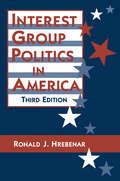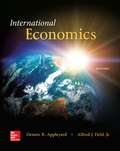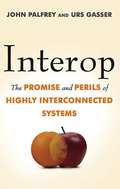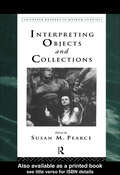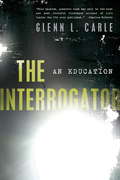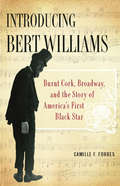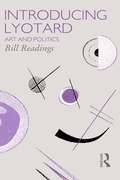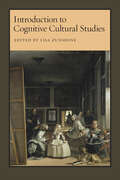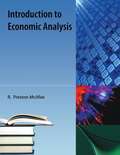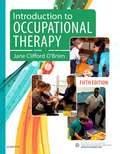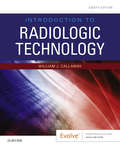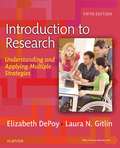- Table View
- List View
Interest Group Politics in America
by Ronald J. Hrebenar Ruth K. ScottInterest-group lobbying is a controversial activity in American politics and this book provides a study of group power. This edition includes expanded coverage of the changing dynamics of power politics in America; new media venues and grassroots organizing; and the perennial issue of reform.
International Business
by Mason A. Carpenter Sanjyot P. DunungInternational Business is one of the most challenging and exciting courses to teach in the Business School. To teach a current, dynamic and complete course you need a textbook by authors as passionate and informed about International Business as you are. Carpenter and Dunung's International Business: The Opportunities and Challenges of a Flat World provides exploration into building, leading, and thriving in global organizations in an increasingly flat world. The authors define "Flat world" as one where (1) service industries that dwarf manufacturing industries in terms of scale and scope, (2) an Internet that pervades life and work, and (3) networks define modern businesses, whether service or manufacturing. Carpenter and Dunung's text is designed to speak to technologically-savvy students who see national borders as bridges and not barriers. The authors use the lexicon of international business, and additionally, develop students' knowledge of international contexts with the aim that they may launch, run, and work in any organization that is global in scope (or is wrestling with global competition or other global threats)
International Economics (Eighth Edition) (PDF)
by Alfred Field Cobb Dennis AppleyardAppleyard and Field's International Economics offers a consistent level of analysis and treatment of the two main subdivisions of international economics--international trade theory and policy and international monetary theory and policy. Comprehensive and clear, International Economics helps students move beyond recognition toward an understanding of current and future international events. New improvements covering the emerging issues in the global economy are designed to help readers both understand and appreciate the growing importance of the global economy in their lives.
International Finance: Theory and Policy
by Steve SuranovicInternational Finance Theory and Policy is built on Steve Suranovic's belief that to understand the international economy, students need to learn how economic models are applied to real world problems. It is true what they say, that "economists do it with models." That's because economic models provide insights about the world that are simply not obtainable solely by discussion of the issues. International Finance Theory and Policy develops a unified model of the international macroeconomy. The text provides detailed descriptions of major macroeconomic variables, covers the interest rate parity and purchasing power parity theories of exchange rate determination, takes an exhaustive look at the pros and cons of trade imbalances and presents the well-known AA-DD model to explore the effects of fiscal and monetary policy under both fixed and flexible exchange rates. The models are developed, not by employing advanced mathematics, but rather by walking students through a detailed description of how a model's assumptions influence its conclusions. But more importantly, each model and theory is connected to real world policy issues. The Finance Text has the following unique features: o Begins with an historical overview of the international macroeconomy to provide context for the theory. o Concludes with a detailed discussion of the pros and cons of fixed and floating exchange rate systems. o Provides an extensive look at the issue of trade imbalances. Readers learn techniques to evaluate whether a country's trade deficit (or surplus) is dangerous, beneficial, or benign. o Explains how purchasing power parity is used to make cross country income comparisons. o Offers clear detailed explanations of the AA-DD model. o Applies the AA-DD model to understand the effects of monetary and fiscal policy on GDP, the exchange rate, and the trade balance.
Interop: The Promise and Perils of Highly Interconnected Systems
by John Palfrey Urs GasserIn Interop, technology experts John Palfrey and Urs Gasser explore the immense importance of interoperability-the standardization and integration of technology-and show how this simple principle will hold the key to our success in the coming decades and beyond.The practice of standardization has been facilitating innovation and economic growth for centuries. The standardization of the railroad gauge revolutionized the flow of commodities, the standardization of money revolutionized debt markets and simplified trade, and the standardization of credit networks has allowed for the purchase of goods using money deposited in a bank half a world away. These advancements did not eradicate the different systems they affected; instead, each system has been transformed so that it can interoperate with systems all over the world, while still preserving local diversity.As Palfrey and Gasser show, interoperability is a critical aspect of any successful system-and now it is more important than ever. Today we are confronted with challenges that affect us on a global scale: the financial crisis, the quest for sustainable energy, and the need to reform health care systems and improve global disaster response systems. The successful flow of information across systems is crucial if we are to solve these problems, but we must also learn to manage the vast degree of interconnection inherent in each system involved. Interoperability offers a number of solutions to these global challenges, but Palfrey and Gasser also consider its potential negative effects, especially with respect to privacy, security, and co-dependence of states; indeed, interoperability has already sparked debates about document data formats, digital music, and how to create successful yet safe cloud computing. Interop demonstrates that, in order to get the most out of interoperability while minimizing its risks, we will need to fundamentally revisit our understanding of how it works, and how it can allow for improvements in each of its constituent parts.In Interop, Palfrey and Gasser argue that there needs to be a nuanced, stable theory of interoperability-one that still generates efficiencies, but which also ensures a sustainable mode of interconnection. Pointing the way forward for the new information economy, Interop provides valuable insights into how technological integration and innovation can flourish in the twenty-first century.
Interpreting Archaeology: Finding Meaning in the Past
by Ian Hodder Michael Shanks Alexandra Alexandri Victor Buchli John Carman Jonathan Last Gavin LucasThis volume provides a forum for debate between varied approaches to the past. The authors, drawn from Europe, North America, Asia and Australasia, represent many different strands of archaeology. They address the philosophical issues involved in interpretation and a desire among archaeologists to come to terms with their own subjective approaches to the material they study, a recognition of how past researchers have also imposed their own value systems on the evidence which they presented.
Interpreting Objects and Collections
by Susan PearceThis volume brings together for the first time the most significant papers on the interpretation of objects and collections and examines how people relate to material culture and why they collect things. The first section of the book discusses the interpretation of objects, setting the philosophical and historical context of object interpretation. Papers are included which discuss objects variously as historical documents, functioning material, and as semiotic texts, as well as those which examine the politics of objects and the methodology of object study. The second section, on the interpretation of collections, looks at the study of collections in their historical and conceptual context. Many topics are covered such as the study of collecting to structure individual identity, its affect on time and space and the construction of gender. There are also papers discussing collection and ideology, collection and social action and the methodology of collection study. This unique anthology of articles and extracts will be of inestimable value to all students and professionals involved in the interpretation of objects and collections.
The Interrogator: An Education
by Glenn L. CarleTo his friends and neighbors, Glenn L. Carle was a wholesome, stereotypical New England Yankee, a former athlete struggling against incipient middle age, someone always with his nose in an abstruse book. But for two decades Carle broke laws, stole, and lied on a daily basis about nearly everything. &“I was almost never who I said I was, or did what I claimed to be doing.&” He was a CIA spy. He thrived in an environment of duplicity and ambiguity, flourishing in the gray areas of policy. The Interrogator is the story of Carle&’s most serious assignment, when he was &“surged&” to become an interrogator in the U.S. Global War on Terror to interrogate a top level detainee at one of the CIA&’s notorious black sites overseas. It tells of his encounter with one of the most senior al-Qa&’ida detainees the U.S. captured after 9/11, a &“ghost detainee&” who, the CIA believed, might hold the key to finding Osama bin Ladin.As Carle&’s interrogation sessions progressed though, he began to seriously doubt the operation. Was this man, kidnapped in the Middle East, really the senior al-Qa&’ida official the CIA believed he was? Headquarters viewed Carle&’s misgivings as naïve troublemaking. Carle found himself isolated, progressively at odds with his institution and his orders. He struggled over how far to push the interrogation, wrestling with whether his actions constituted torture, and with what defined his real duty to his country. Then, in a dramatic twist, headquarters spirited the detainee and Carle to the CIA&’s harshest interrogation facility, a place of darkness and fear, which even CIA officers only dared mention in whispers.A haunting tale of sadness, confusion, and determination, The Interrogator is a shocking and intimate look at the world of espionage. It leads the reader through the underworld of the Global War on Terror, asking us to consider the professional and personal challenges faced by an intelligence officer during a time of war, and the unimaginable ways in which war alters our institutions and American society.
Intimations of Christianity Among The Greeks
by Simone WeilThis book is a collection of Simone Weil's writings, which reflect her intellectual and spiritual concerns, on Greek thought. It discusses how precursors to Christian religious ideas can be found in ancient Greek mythology, literature and philosophy.
Into the Midnight Void (Beyond the Ruby Veil #2)
by Mara FitzgeraldFans of Holly Black and Kendare Blake will obsess over the conclusion to this deliciously dark YA fantasy duology!Emanuela has finally gotten what she's always wanted. Since escaping her catacomb prison, she's become the supreme ruler of everything under the veils. Finally, she has the power to throw aside senseless, old traditions and run things exactly the way they should be. But when cracks in her magic start to show, Emanuela begrudgingly allies herself with her enemies, including her frustratingly alluring archnemesis, Verene. Together, they discover deeper truths about the mysterious blood magic Emanuela and Verene both wield. There is a higher, otherworldly authority outside the veils, and in order to save Occhia and the other realms, Emanuela may just have to rip another crown off someone's head.
Introducing Bert Williams: Burnt Cork, Broadway, and the Story of America's First Black Star
by Camille F. ForbesAccording to critics of his time, Bert Williams was "the Greatest Comedian on the American Stage.” A black Bahamian immigrant, Williams made his start as a barker advertising the rough-and-tumble "medicine shows” that dotted the Wild West at the end of the nineteenth century. Not long after joining a minstrel troupe and donning the burnt- cork makeup of blackface, he teamed up with African American George Walker in a sixteen-year partnership that would take them from rural western mining towns to the bright lights of Broadway.In Introducing Bert Williams, historian Camille Forbes reveals a fascinating figure, initiating the reader into the vivid world of nineteenth- and early twentieth-century popular entertainment. Williams's long and varied career is a whirlwind of drama, glamour, and ambition-nothing less than the birth of American show business.
Introducing Lyotard: Art and Politics (Critics of the Twentieth Century)
by Bill ReadingsThe first truly introductory text on Lyotard, this book situates Lyotard's interventions in the postmodern debate in the wider context of his rethinking of the politics of representation. Bill Readings examines Lyotard's relationship to structuralism, Marxism and semiotics, and contrasts his work with the literary deconstruction of Paul de Man; he positions Lyotard's work so as to draw out the implications of poststructurlaism's attention to difference in reading. Lyotard's willingness to question the political and examine the relationship between art and politics is shown to undermine the charge that deconstruction abdicates political and social articulation.
Introduction to Cognitive Cultural Studies
by Lisa ZunshineDrawing on the explosion of academic and public interest in cognitive science in the past two decades, this volume features articles that combine literary and cultural analysis with insights from neuroscience, cognitive evolutionary psychology and anthropology, and cognitive linguistics. Lisa Zunshine’s introduction provides a broad overview of the field. The essays that follow are organized into four parts that explore developments in literary universals, cognitive historicism, cognitive narratology, and cognitive approaches in dialogue with other theoretical approaches, such as postcolonial studies, ecocriticism, aesthetics, and poststructuralism. Introduction to Cognitive Cultural Studies provides readers with grounding in several major areas of cognitive science, applies insights from cognitive science to cultural representations, and recognizes the cognitive approach’s commitment to seeking common ground with existing literary-theoretical paradigms. This book is ideal for graduate courses and seminars devoted to cognitive approaches to cultural studies and literary criticism.Contributors: Mary Thomas Crane, Nancy Easterlin, David Herman, Patrick Colm Hogan, Bruce McConachie, Alan Palmer, Alan Richardson, Ellen Spolsky, G. Gabrielle Starr, Blakey Vermeule, Lisa Zunshine
An Introduction to Cognitive Psychology: Processes and disorders
by David GroomeDavid Groome with Nicola Brace, Graham Edgar, Helen Edgar, Michael Eysenck, Tom Manly, Hayley Ness, Graham Pike, Sophie Scott, and Elizabeth Styles. An Introduction to Cognitive Psychology: Processes and Disorders is a comprehensive introductory textbook for undergraduate students. The third edition of this well-established text has been completely revised and updated to cover all the key areas of cognition, including perception, attention, memory, thinking and language. Uniquely, alongside chapters on normal cognitive function, there are chapters on related clinical disorders (agnosia, amnesia, thought disorder and aphasia) which help to provide a thorough insight into the nature of cognition. Key features: Completely revised and updated throughout to provide a comprehensive overview of current thinking in the field Accessibly written and including new authors, including Sophie Scott, Tom Manly, Hayley Ness, and Elizabeth Styles, all established experts in their field A new chapter on Emotion and Cognition, written by Michael Eysenck, the leading authority in the field Greater coverage of neuropsychological disorders, with additional material from the latest brain imaging research that has completely revolutionized neuropsychology Specially designed textbook features, chapter summaries, further reading, and a glossary of key terms A companion website featuring an extensive range of online resources for both teachers and students. Written to cover all levels of ability using helpful figures and illustrations, An Introduction to Cognitive Psychology has sufficient depth to appeal to the most able students while the clear and accessible text, written by experienced teachers, will help students who find the material difficult. It will appeal to any student on an undergraduate psychology degree course, as well as to medical students and those studying in related clinical professions such as nursing.
Introduction to Economic Analysis
by R. Preston McafeeThis book presents introductory economics ("principles") material using standard mathematical tools, including calculus. It is designed for a relatively sophisticated undergraduate who has not taken a basic university course in economics. It also contains the standard intermediate microeconomics material and some material that ought to be standard but is not. The book can easily serve as an intermediate microeconomics text. The focus of this book is on the conceptual tools and not on fluff. Most microeconomics texts are mostly fluff and the fluff market is exceedingly over-served by $100+ texts. In contrast, this book reflects the approach actually adopted by the majority of economists for understanding economic activity. There are lots of models and equations and no pictures of economists.
Introduction to Economic Analysis
by R. Preston Mcafee Tracy R. LewisThis book presents standard intermediate microeconomics material and some material that, in the authors' view, ought to be standard but is not. Introductory economics material is integrated. Standard mathematical tools, including calculus, are used throughout. The book easily serves as an intermediate microeconomics text, and can be used for a relatively sophisticated undergraduate who has not taken a basic university course in economics. The focus of this book is on the conceptual tools and not on fluff. As such, it reflects the approach actually adopted by the majority of economists for understanding economic activity. There are lots of models and equations, and no pictures of economists ;-) Economic analysis is used in many situations. When British Petroleum sets the price for Alaskan crude oil, it uses an estimated demand model, both for gasoline consumers and also for the refineries to which BP sells. Economic analysis was used by experts in the antitrust suit brought by the U.S. Department of Justice both to understand Microsoft s incentive to foreclose (eliminate from the market) rival Netscape and consumer behavior in the face of alleged foreclosure. Stock market analysts use economic models to forecast the profits of companies to predict the price of their stocks. When the government forecasts the budget deficit or considers a change in environmental regulations, it uses economic models. This book presents the building blocks of the models in common use by an army of economists thousands of times per day. This book, plus econometrics, provides most of the economic analysis tools to take upper division economics courses of any type.
Introduction to Economic Analysis
by R. Preston Mcafee Tracy R. LewisThis book presents standard intermediate microeconomics material and some material that, in the authors' view, ought to be standard but is not. Introductory economics material is integrated. Standard mathematical tools, including calculus, are used throughout. The book easily serves as an intermediate microeconomics text, and can be used for a relatively sophisticated undergraduate who has not taken a basic university course in economics. The focus of this book is on the conceptual tools and not on fluff. As such, it reflects the approach actually adopted by the majority of economists for understanding economic activity. There are lots of models and equations, and no pictures of economists ;-) Economic analysis is used in many situations. When British Petroleum sets the price for Alaskan crude oil, it uses an estimated demand model, both for gasoline consumers and also for the refineries to which BP sells. Economic analysis was used by experts in the antitrust suit brought by the U.S. Department of Justice both to understand Microsoft s incentive to foreclose (eliminate from the market) rival Netscape and consumer behavior in the face of alleged foreclosure. Stock market analysts use economic models to forecast the profits of companies to predict the price of their stocks. When the government forecasts the budget deficit or considers a change in environmental regulations, it uses economic models. This book presents the building blocks of the models in common use by an army of economists thousands of times per day. This book, plus econometrics, provides most of the economic analysis tools to take upper division economics courses of any type.
An Introduction to German Pietism: Protestant Renewal at the Dawn of Modern Europe (Young Center Books in Anabaptist and Pietist Studies)
by Douglas H. ShantzAn Introduction to German Pietism provides a scholarly investigation of a movement that changed the history of Protestantism. The Pietists can be credited with inspiring both Evangelicalism and modern individualism.Taking into account new discoveries in the field, Douglas H. Shantz focuses on features of Pietism that made it religiously and culturally significant. He discusses the social and religious roots of Pietism in earlier German Radicalism and situates Pietist beginnings in three cities: Frankfurt, Leipzig, and Halle. Shantz also examines the cultural worlds of the Pietists, including Pietism and gender, Pietists as readers and translators of the Bible, and Pietists as missionaries to the far reaches of the world. He not only considers Pietism's role in shaping modern western religion and culture but also reflects on the relevance of the Pietist religious paradigm of today.The first survey of German Pietism in English in forty years, An Introduction to German Pietism provides a narrative interpretation of the movement as a whole. The book's accessible tone and concise portrayal of an extensive and complex subject make it ideal for courses on early modern Christianity and German history. The book includes appendices with translations of German primary sources and discussion questions.
Introduction to Nuclear Power
by Geoffrey F. Hewitt John G. CollierThe authors of this text aim to educate the reader on nuclear power and its future potential. It focuses on nuclear accidents such as Chernobyl and Three Mile Island, and their consequences, with the understanding that there are safety lessons to be learned if nuclear power generation is going to be expanded to meet our growing energy needs.
Introduction to Occupational Therapy- E-Book
by Jane Clifford O'BrienPrepare for success in OT practice with a complete overview of the profession! Introduction to Occupational Therapy, 5th Edition helps you master the roles and responsibilities of the OT practitioner. Content promotes evidence-based OT practice, from client evaluation to planning interventions and goals to reaching optimal outcomes. You’ll also learn valuable skills in clinical reasoning and in providing occupational therapy across the client’s entire lifespan. Written by experienced educator and author Jane Clifford O’Brien, this comprehensive resource discusses today’s OT treatment settings and adds a new chapter on cultural competence.Complete coverage of OT practice prepares you for care in areas such as adult, pediatric, geriatric, and mental health.A broad perspective fits the needs of both Occupational Therapy and Occupational Therapy Assistant students.Case studies and activities in each chapter help you apply concepts and develop problem-solving skills.Emphasis on evidence-based practice helps you learn to think logically and use research literature to formulate diagnoses and treatment plans.The OT Practice Framework provides a sound basis for decision making, defining occupational therapy areas of concern and the OT process. Chapter objectives, key terms, chapter summaries, and review questions highlight important content in each chapter.Student resources on the Evolve companion website include review questions with answers along with crossword puzzles to reinforce what you’ve learned in the book. NEW content on OT theory and practice includes the latest updates to the Occupational Therapy Practice Framework and OT Code of Ethics.New coverage of the role of certified Occupational Therapy Assistants shows where OTAs are employed, what licensure requirements they must meet, and how they fit into the scope of OT practice.NEW chapter on cultural competence provides the tools you need to work with culturally diverse clients in today’s healthcare environment, and includes case studies with examples of cultural competence and its impact on the practice of OT.NEW Centennial Vision commentary provides a ‘big picture’ view of today’s occupational therapy, and shows how OT is becoming a powerful, widely recognized, science-driven, and evidence-based profession as it reaches the age of 100.
An Introduction to Politics
by T. M. SellThis textbook introduces students to the field of Political Studies. An Introduction to Politics is a little more brief, concise and in-between than similar textbooks currently on the market. Because this is usually a first-year course, overloading a textbook with too much minutiae of the ins and outs of politics can lead to students giving up on the book. Politics is a great story - the story of human existence. A successful textbook needs to tell that story.
Introduction to Psychology
by Charles StangorWhen you teach Introduction to Psychology, do you find it difficult -- much harder than teaching classes in statistics or research methods? Do you easily give a lecture on the sympathetic nervous system, a lecture on Piaget, and a lecture on social cognition, but struggle with linking these topics together for the student? Do you feel like you are presenting a laundry list of research findings rather than an integrated set of principles and knowledge? Have you wondered how to ensure your course is relevant to your students? If so, then you have something in common with Charles Stangor. Charles Stangor's Introduction to Psychology utilizes the dual theme of behavior and empiricism to make psychology relevant to intro students. Charles wrote this book to help students organize their thinking about psychology at a conceptual level. Five or ten years from now, he does not expect his students to remember the details of most of what he teaches them.
Introduction to Psychology, Version 2.0
by Charles StangorCharles Stangor's Introduction to Psychology utilizes the dual theme of behavior and empiricism to make psychology relevant to intro students.
Introduction to Radiologic Technology - E-Book
by William J. CallawayGet an introduction to the radiologic technology profession with this solid text! Covering everything a beginning radiography student needs to know, Introduction to Radiologic Technology, 8th Edition lays the groundwork for a successful career. It includes coverage of the coursework required, basic learning skills, a historical perspective on radiology, and insight into key topics such as the language of medicine, digital imaging, patient care, and radiation safety. This book also includes the latest changes in the registry exam and a discussion of the radiographer’s role in the practice setting and opportunities for advancement.A clear, easy-to-read style does not assume you have prior knowledge of the subject matter. Critical thinking skills are highlighted, with four important steps to take in assessing situations and making informed decisions.Guidelines for a solid radiography career foundation discuss customer service, ethics and professionalism, and professional organizations.Thorough introduction to radiologic technology includes a concise overview of what you can expect in your coursework.Cultural diversity coverage orients you to the challenge of dealing with patients from different cultures in the medical environment. NEW! Updated career advancement opportunities and newest medical terminology include just the right amount detail for new radiographers.NEW! Incorporation of SI units of measurement accurately depict current practice standards.
Introduction to Research - E-Book: Understanding and Applying Multiple Strategies
by Elizabeth DePoy Laura N. GitlinBridge the gap between research and practice with Introduction to Research: Understanding and Applying Multiple Strategies, 5th Edition. This easy-to-read edition covers all the major research design strategies: qualitative, quantitative, naturalistic, experimental-type, and mixed method. And with the text’s up-to-date research information and references, you will have a solid foundation from which to critique and understand research designs and their applications to healthcare and human service settings.Case examples provide real-life snapshots of what it is like to participate in different types of research processes, identify research dilemmas relevant to chapter subjects, and alert you to problems you might encounter. Authors make the topics more accessible, so research becomes more relevant - and topics come to life. Covers experimental-type, naturalistic, and mixed method design strategies to improve your ability to compare, contrast, and integrate different methods.Presents complex information clearly in a highly readable, and easy-to-understand, manner.Includes detailed discussions of qualitative and quantitative methodologies, a unique and balanced focus that makes this text more comprehensive than others in its field.NEW! Up-to-date research methods, strategies, and references, like digital sources, visual methods, and geographical analysis, give you the latest information on research in diverse areas of health and human services.
